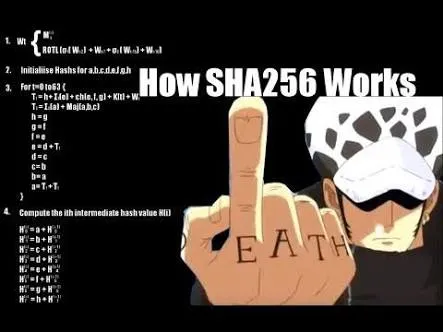
Bitcoin uses a system called a crytographic hash function, in this case SHA-256, to verify each block and it works like this.
SHA-256 simply outputs a string of 256 bits, that's a 256 long string of 1s and 0s, for a given input. The output seems random, but it's not. SHA-256 will always give the same output for a given input, But, as far as we know, it's impossible to take the output and figure out what the input was.It's a one way street that means, in order to generate a specific desired output, the only way of doing it is by trial and error. Guessing inputs and checking the output and to do this quickly requires a significant amount of computational power.Essentially employing millions of little monkeys in your computers to type number until one manages to get it correctly.
So how does this apply to Blockchain verification of Bitcoin?
For a block to be added to the chain it needs to be signed with a SHA-256 input that will result in a predetermined string of zeros at the start. The number of zeros needed is determined by how much computational power is trying to verify the Blockchain. The more zeros needed, the more computational power is needed.
We want the blockchain to be verified every 10 minutes, so in order to maintain that verification time, the number of zeros needed keeps rising as more computational power id dedicated to the network.
It is through this huge dedication of computation power that ensures security of the Blockchain. It would be unfeasible for an individual to rewrite the Blockchain with false information, as they would first need to dedicate enough power to sign previously written blocks, and manage to keep up witb the blocks currently being written by the rest of the network. A Herculean task.